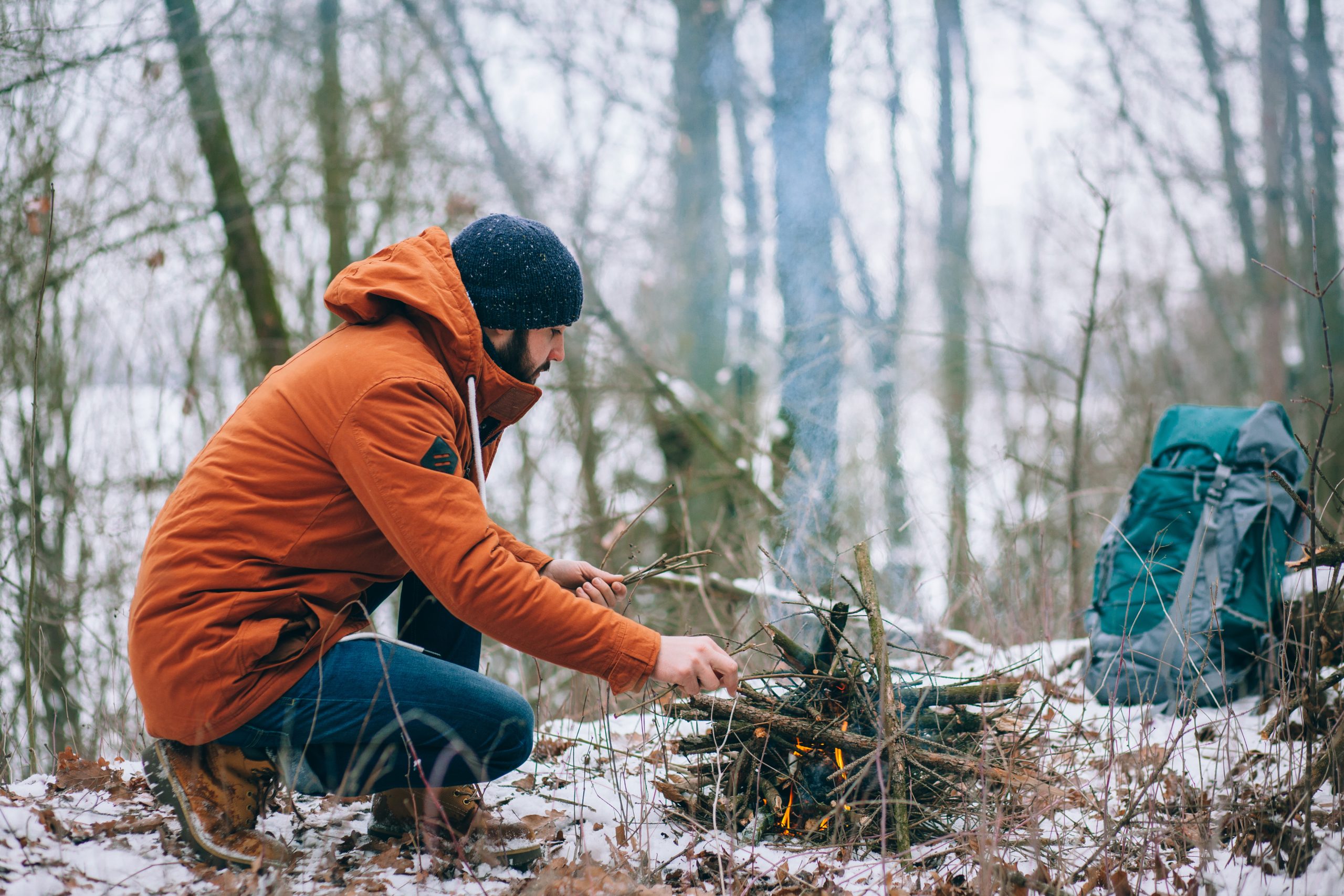Last Updated on October 17, 2022 by admin_hunter
People find outdoor fun and adventures as among the most treasured pastimes. Some opt to stay out in the woods for a while enjoying the simple yet good life. However, this comes with all the risk involved in survival. There are challenging and unforgiving circumstances that might occur during your stay. Learning how to survive in the woods for a year involves tending the basic physical needs and preparing yourself for the numerous possibilities that might happen.
How to Survive in the Woods for a Year?
Knowing how to sustain your basic needs, such as water and food, while staying in the woods is the essential step towards survival.
Water Sources
Stable water sources will keep you hydrated during your stay in the woods. This is also essential for hygiene, cooking, cleaning, and other day-to-day activities.
- Find a Freshwater Source
First, find a steady source of potable water. Try searching low-lying areas for any signs of freshwater, such as streams, ponds, and creeks. Water can also be collected at the foot of the cliffs, so be wary of nearby mountains.
Look for areas with luscious green foliage and signs of animal tracks as these indicate a potential source of water. The presence of insects, including flies and mosquitoes are also good signs of water nearby.
- Collect Rainwater
Rainwater is probably the safest and easiest way to stay hydrated in the woods. Once the rain started to pour, place any clean containers out for collection.
A poncho or a tarp can also be used for collecting rainwater. Hang and tie the corners for at least three to four feet above the ground. A small rock can be placed in the center to create depression, which is perfect for collecting water.
Keep in mind not to let the collected water sit in the container or poncho for a long time to prevent bacteria contamination. Always purify the collected water before consumption.
- Use Morning Dew
Capture morning dew by using a piece of absorbent cotton material, such as cloth, rag, shirt, or socks. To collect more amounts, this is best done before sunrise.
Clearing and meadows with tall grasses make an ideal spot for the cloth to ensure pick up of the dew. Move the cloth around until saturated and carefully wring the water out to a container. Be careful not to collect dew from dangerous and poisonous plants.
- Dig a Hole
Look for dried-up streams or areas with loads of vegetation as this is a perfect spot for digging a hole to find freshwater.
Using a sturdy stick of a shovel, dig a hole deep enough to reach the ground level saturated with water. Make it wide enough for easy scooping the water out from the hole. Be sure to wait for the mud to settle down and the water to clear up before collection.
- Melt Ice or Snow
The ice and snow present in the ground can be collected and melted to become fresh drinking water. You can either place it next to a fire or use your body heat for melting.
Ice and snow with bluish tint are the best options. Gray and opaque frozen water may contain high salt concentration, which can cause dehydration.
- Purify the Water
No matter what the source of your water, it is important to purify them to ensure the absence of microorganisms that can be dangerous to your health
Strain water using a piece of cloth to remove large particles, then boil for about 10 minutes. Another purification method is exposing the water in direct sunlight for six hours.
Food Sources
Food is essential to keep you energized throughout your stay in the woods. Once your food stocks become limited, finding sources in nature is the next best option.
- Flip Logs for Food
Insects are rich in fats and proteins, which will help you survive in the woods. Flip over logs to check for edible insects, such as ants, beetles, grubs, and termites, which can be eaten raw. Worms in the dirt are also good options.
Those with hard outer shells such as grasshoppers and beetles should be cooked for at least five minutes before consumption to remove parasites.
Be sure to eat insects that you have killed. Avoid any flies, spiders, and ticks.
- Pick Edible Berries
Pick and eat berries that are recognized to be edible, including blackberries, raspberries, and strawberries. Stay away from those that you cannot identify as these may be toxic and dangerous.
- Look for Mushrooms
Edible and wild mushrooms are commonly seen in damp areas or on dying trees. Be careful in choosing the type of mushroom as the wrong ones can lead to poisoning and even death.
Morel mushrooms, which are found near the bottom of the trees, come with a spongy cap that resembles a honeycomb. Chanterelles have bright yellow-orange color and found on conifers and hardwood trees. Lastly, oyster mushrooms are normally in clusters and resemble a scallop or oyster.
- Forage Wild Plants
The woods are rich with edible wild plants to keep you satisfied and full. These, however, should be chosen carefully to prevent gathering those that are poison. Wash them thoroughly before eating or cooking. If you are not familiar with the plant, then it is best not to eat them.
- Build a Snare
A snare made of string and wire will relatively catch small animals such as squirrels and rabbits. Set-up as many snares as possible in the trail or over the footpath. Be sure to check them every 24 hours to see if there are animals caught.
- Avoid Large Animals
Staying in the woods for long requires you to be healthy and strong. Deer and wild pigs are good sources of nutritious meat; however, hunting these animals can lead to injury if you are not using the proper gear.
Additionally, preserving the massive amount of meat may be challenging with the lack of tools needed. Stick with smaller animals, which are safer to hunt and easier to store instead of the big ones that can be life-threatening.
Final Thoughts
Knowing how to survive in the woods for a year is fun and exciting, yet may become challenging through time. Yes, you can bring along non-perishable foods with you, but the question is, “How long will they last?”
This is where the challenging part comes in—how to keep up with your water and food supply! There are several ways on how to survive this dilemma. With the help of nature and its components plus the use of proper tools, surviving the wild even for years is possible.

